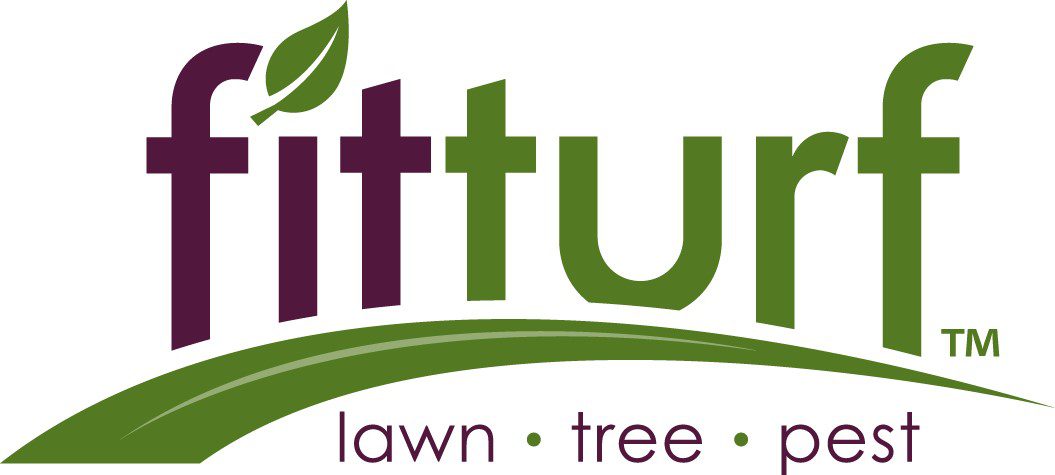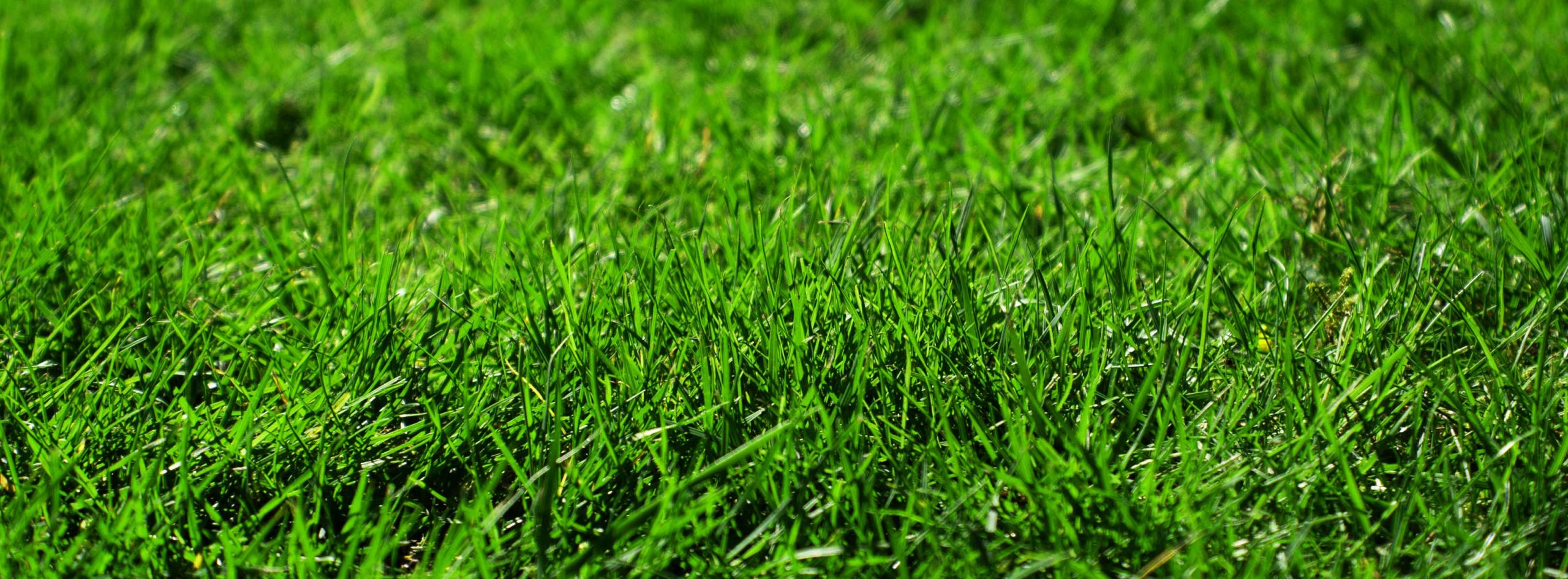Customer Support
303.221.6900Turf Insects
You may suspect that you have turf insects affecting your lawn, but if you don’t know which type you have, then how can you treat it? The experts at Fit Turf know exactly how to identify different types of lawn insects in the Colorado area, and this Learning Center Resource will help you to learn how to identify them as well.
Turf Mites
Clover Mite & Banks Mite
Bryobia praetiosa & Oligonychus pratensis
Many species of mites are common in Colorado turf grass. Some are important in the breakdown of thatch and the recycling of nutrients. Other are important predators of pest insects and mites. Two mite species are among those that damage Colorado turf: Clover mites and Banks grass mites. The eggs of Winter Mites hatch in October, and their numbers increase into late winter. The larvae feed by gnawing the surface of the grass blades and sucking up the juicy contents. Heavy Mite populations diminish in Late Spring when eggs are laid on dead grass plants, and the adults die soon after; Adults lay their eggs as temperatures rise early – late spring.
DIAGNOSIS :
- General thinning, in patches.
- Visible in late summer or early fall, typically concentrated in wetter areas.
- The grass blades will show small, yellow speckles. As the damage increases, the grass becomes tan in color and eventually dies.
IPM METHODS :
Control using insecticide labeled for this adult insect, as well as another labeled to target dormant eggs before they hatch. Several applications will be necessary to prevent and control (6 per year during fall, winter and early spring months)
White Grubs
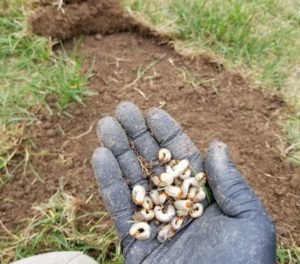
Masked Chafer Larvae & Japanese Beetle Larvae
White grubs are the immature or larval stages of insects belonging to the scarab beetles or scarabs. Larvae cause significant plant damage because their principle function is to feed, grow, and become adults. Important species found damaging turf grass include masked chafers, Japanese beetles, and May and June beetles.
DIAGNOSIS :
- Lawn appears drought stressed or dying, usually in late summer or early fall.
- Larvae feed on roots of grasses turf may easily roll-up, like carpet or newly laid sod.
- Soil under the damaged turf grass has been loosened
- Skunks or other vertebrate predators are digging up the turf.
IPM METHODS :
- Schedule annual prevention applications every May or June.
- Control using insecticide labeled for grubs. Older and larger grubs are more difficult to control.
- Applications must reach root zone. Natural barriers such as thatch greatly reduce penetration to the root zone.
- Grow a healthy lawn to better tolerate damage that may occur.
Billbugs

Sphenophorus parvulus Larvae & Sphenophorus cicatristriatus Larvae
Billbugs are a group of weevils or “snout beetles”. When full-grown, larvae may superficially resemble small white grub larvae. They can be differentiated by the absence of legs. During feeding, billbugs produce characteristic sawdust-like excrement.
DIAGNOSIS :
- Lawn appears drought stressed or may die in small patches.
- Larvae feed on grass roots, cutting them off.
- Midsummer is when damage is most visible.
- Damaged grass breaks easily at the crown when pulled.
- These legless grubs can be found in the crown or the root zone of the grass.
IPM METHODS :
- Larval control with insecticides is not generally recommended because of the poor results.
- Applications of insect control must reach root zone. Natural barriers such as thatch greatly reduce penetration to the root zone.
- Adequate watering and attention to lawn care needs are critical in managing billbug injury. Damage is more pronounced on lawns suffering from drought stress.
Sod Webworm
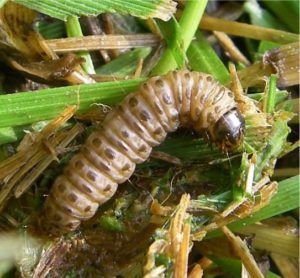
Sphenophorus parvulus Larvae & Sphenophorus cicatristriatus Larvae
Sod Webworms are a large group of moths that develop in the larval stages by feeding on various grasses. Adult states are commonly referred to as a type of “lawn moth”. Half a dozen species of sod webworms occur in Colorado, most with similar habits.
DIAGNOSIS :
- General thinning or failure of a lawn to green-up in spring
- General thinning midsummer
- Flocks of birds feeding on the lawn
- Discovery of cupped leaves, green pellet-like droppings (frass), silk or larvae in the thatch
IPM METHODS :
- Control using insecticide labeled for this insect.
- Extra cultural care
- Fertilize and water to stimulate root growth, usually allows damaged areas to outgrow damage.
- Rake dead grass and re-seed.
- Grow a healthy lawn to better tolerate sod webworm injury.
Cutworms
Cutworms get their name from their habitat of cutting plants at ground level as they feed at night. Only a few cutworm species are associated with turf grass in the region. They generally are minor pests in residential and commercial turf grass. An exception can be a black cutworm, which can be a serious major pest of golf greens.
Bronzed Cutworm

Nephelodes minians
The bronzed cutworm is the most common cutworm associated with Colorado turf grass. Larvae generally are bronze with light yellow and orange striping. Bronzed cutworms overwinter as eggs that hatch in late winter. They feed on the roots of the grass in the spring. In May, they become full grown, stop feeding, and pupate.
DIAGNOSIS :
- General thinning or failure of a lawn to green-up in early to midspring
- Large piles of green-pelleted droppings
- Larvae in the thatch
IPM METHODS :
- Control using insecticide labeled for this insect. Several applications may be necessary
Armyworm
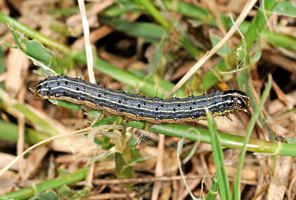
Mythimna unipucta
Armyworms closely resemble bronzed cutworms. The caterpillars range in color from green to brown, or even black, and have pale stripes. Adult armyworm moths lay eggs at night. Armyworms feed at night, and move deeply into the thatch for cover during the day. Because armyworms do not overwinter in Colorado, infestations depend on flights of the adult moths in the state during the summer. They rarely damage turf grass.
DIAGNOSIS :
- General thinning, in patches.
- Visible in late summer or early fall, typically concentrated in wetter areas.
IPM METHODS :
- Control using insecticide labeled for this insect. Several applications may be necessary
